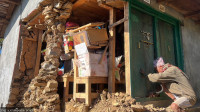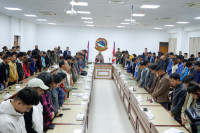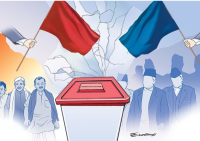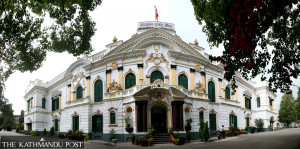Columns
Nepal’s billion-dollar smog
Despite the escalating costs, Nepal’s approach to air pollution remains underpowered.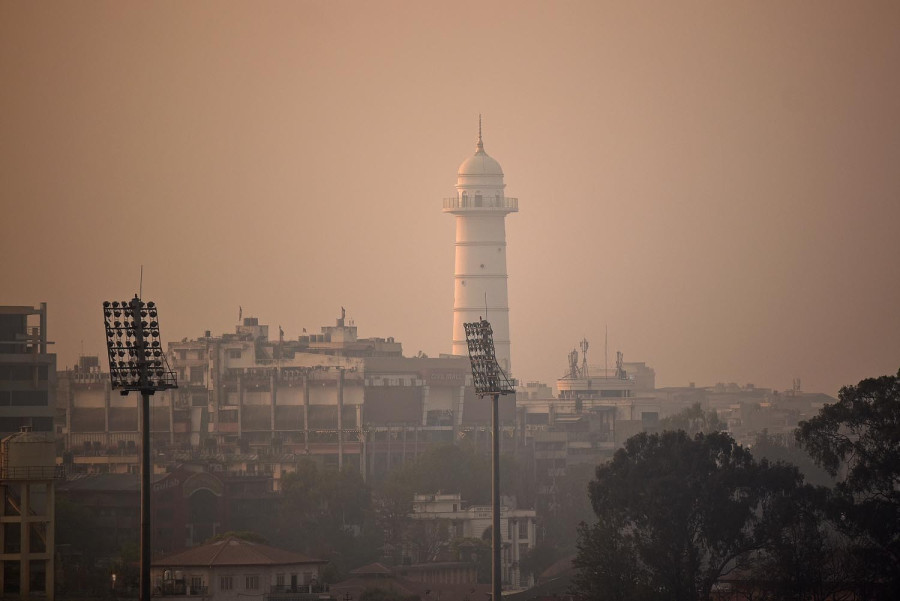
Yanki Ukyab
My fondest memories of growing up in Kathmandu in the 1980s are riding trolley buses, the cool shade of eucalyptus-lined streets, clear mountain views in the Northern skyline and a city that bathed in pristine air. However, in recent years, Kathmandu has topped the list of the world’s most polluted cities. This April, a toxic mix of forest fires, delayed monsoon rains, emissions from aging diesel vehicles and unchecked construction dust drove PM2.5 level soaring to over 200 micrograms per cubic metre—more than 40 times the World Health Organisation’s (WHO) safe limit.
This toxic air is killing more than 40,000 Nepalis every year, according to the WHO. Worryingly, this toll exceeds casualties from the 2015 earthquake. Kathmandu residents are now losing up to 3.5 years of life expectancy due to toxic air, according to the Air Quality Life Index. But the economic damage is just as alarming.
Recent analyses by the World Bank and United Nations Environment Programme suggest that air pollution is cumulatively draining between 5 percent to 10 percent of Nepal’s GDP annually, up to $4 billion. Air pollution has long been seen as a public health or environmental concern. But today, it has quietly morphed into a significant threat to Nepal’s economic future. This “billion-dollar smog” is eroding our national wealth, economic prospects, productivity and most importantly, human potential all while remaining largely unchecked.
Economic cost of dirty air
To bring some perspective, the cumulative economic losses translate to roughly $130 per Nepali each year, nearly equivalent to a full month’s minimum wage—a heavy burden for the average Nepali worker. Nepal’s toxic air affects the economy in multiple, mutually reinforcing ways.
It weakens human productivity. Urban informal workers who comprise nearly 90 percent of Kathmandu’s labour force are particularly vulnerable. Surveys indicate vegetable vendors earning around Rs1,500 a day report losing up to 10 workdays a year to pollution-related illnesses, sacrificing about Rs15,000 annually, which is nearly a month’s worth of groceries. Construction workers report respiratory infections sidelining them for five to seven days per episode, reducing their annual earnings by up to 10 percent. Brick kiln workers exposed daily to smoke and ash experience respiratory morbidity rates exceeding 42 percent compared to just 9.3 percent in less polluted rural areas.
Air pollution also drives up healthcare costs, both for families and for the country. At the national level, studies estimate that the economic cost of pollution-linked diseases was $259 million in 2015 alone-equivalent to 1.2 percent of Nepal’s GDP that year and has likely worsened since.
Last but not least, pollution is damaging key sectors vital for Nepal’s long-term growth- tourism being the most directly impacted. Tourists are avoiding smog-choked cities. Even a modest 5 percent decline in tourist arrivals due to air pollution could cost Nepal over $35 million annually—a major hit to an industry that provides over a million jobs.
Challenges in current approach
Despite these escalating costs, Nepal’s approach to air pollution remains underpowered and fragmented. Vehicle emissions continue to surge, particularly from unregulated diesel vehicles. Construction sites operate with little dust control. Forest fire responses are reactive rather than preventive.
Institutional responsibility and capabilities to solve this issue remains scattered across multiple ministries, weakening accountability and implementation. Also, more focused studies that link air pollution to economic outcomes are required so as to empower policymakers with the evidence needed to drive prompt and decisive action.
Three economic policy moves
If Nepal is to break free from the grip of the “billion-dollar smog,” we must reframe clean air as a national pride project—perhaps more urgent than our hydropower or infrastructure projects. I believe that three key policy actions could make a meaningful difference.
First, a National Clean Air Task Force with a clear mandate for cross-ministerial coordination, local enforcement and public behavioural engagement could be instrumental. Such a body, if empowered to set binding emission targets, monitor air quality in real time, and lead national campaigns to shift public norms around vehicle emissions, construction practices, and forest fire management, could be highly effective. Crucially, this effort if decentralised to local governments, empowering them with the authority, resources, and data to implement air quality measures tailored to local contexts across Nepal—could accelerate change.
Second, Nepal could leverage climate finance to launch a Kathmandu Clean Transport Bond to electrify major public transport. Transitioning from aging diesel buses to electric alternatives would slash emissions, reduce health costs and create green jobs. Nepal has already entered the green bond market: NMB Bank Ltd. with support from BII, IFC and MetLife have issued a $60 million local currency green bond to help SMEs drive climate action. Global examples, like Fiji’s sovereign blue bond, show how such instruments can finance sustainable transitions while attracting investors and delivering strong economic and environmental returns for countries like Nepal.
Third, a PM Emissions Trading System pilot could be explored in selected sectors such as brick kilns, construction and freight transport. By putting a price on particulate matter emissions and allowing market-based trading of pollution permits, the government can create financial incentives for firms to reduce emissions at lower cost. Early pilots in Costa Rica, Chile and South Korea suggest that emissions trading systems can both cut pollution and drive technological innovation.
A breath of hope
The “billion-dollar smog” is a crisis of our own making but also one we can solve. Research shows that implementing mitigation measures could prevent 29,000 premature deaths and 1.7 million tons of crop loss by 2050. The path forward is clear: We must elevate clean air as a national priority project, use economic policy tools, shift public norms and mobilise public and private investment. For Nepal to truly prosper, breathing clean air must not be a privilege, it must be a right.




 12.12°C Kathmandu
12.12°C Kathmandu

